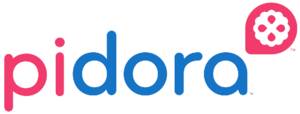This article is more than 1 year old
Fedora cooks up new Linux for Raspberry Pi
Pidora 18 'remix' can reveal a Pi's IP address by flashing LEDs
Raspberry Pi users have another operation system option, after the folks behind Fedora Linux changed their recipe and issued a “remix” of the OS for the tiny computer.
Pidora 18, as the release is known, is not the very first of its kind, as two previous versions are available but weren't optimised for the ARMv6 architecture. Pidora 18 has undergone that optimisation and is therefore ready to run on the Pi.
The use of the term “remix” is important because the Fedora folk point out it denotes the release includes “proprietary software provided by the Raspberry Pi Foundation and the SOC vendor Broadcom cannot be included directly in Fedora.” Those who would rather their Pi OS conform to higher standards of OS purity will therefore have to look elsewhere.
Those who like the idea of Fedora-on-Pi can look forward to the following list of features suggested by the Fedora folk as important advances:
- Almost all of the Fedora 18 package set available via yum(thousands of packages were built from the official Fedora repository and made available online)
- Compiled specifically to take advantage of the hardware already built into the Raspberry Pi
- Graphical firstboot configuration (with additional modules specifically made for the Raspberry Pi)
- Compact initial image size (for fast downloads) and auto-resize(for maximum storage afterwards)
- Auto swap creation available to allow for larger memory usage
- C, Python and Perl programming languages available and included in the SD card
- Initial release of headless mode can be used with setups lacking a monitor or display
- IP address information can be read over the speakers and flashed with the LED light
- For graphical operation, Gedit text editor can be used with plugins (python console, file manager, syntax highlighting) to serve as a mini-graphical IDE
- For console operation, easy-to-use text editors are included (nled, nano, vi) plus Midnight Commander for file management
- Includes libraries capable of supporting external hardware such as motors and robotics (via GPIO, I2C, SPI)

There's also a headless mode that may appeal because the FAQ for the new OS points out: “The GUI in particular is slow, because the 2D graphics (the X Window System) are not yet connected to the 3D graphics processing unit on the SOC.”
That kind of issue leaves Pidora a nice addition to the operating systems available for the Pi, rather than a “watch out Raspbian, there's a new kid in town” proposition.
The OS can be found here and is a 600MB download. ®
